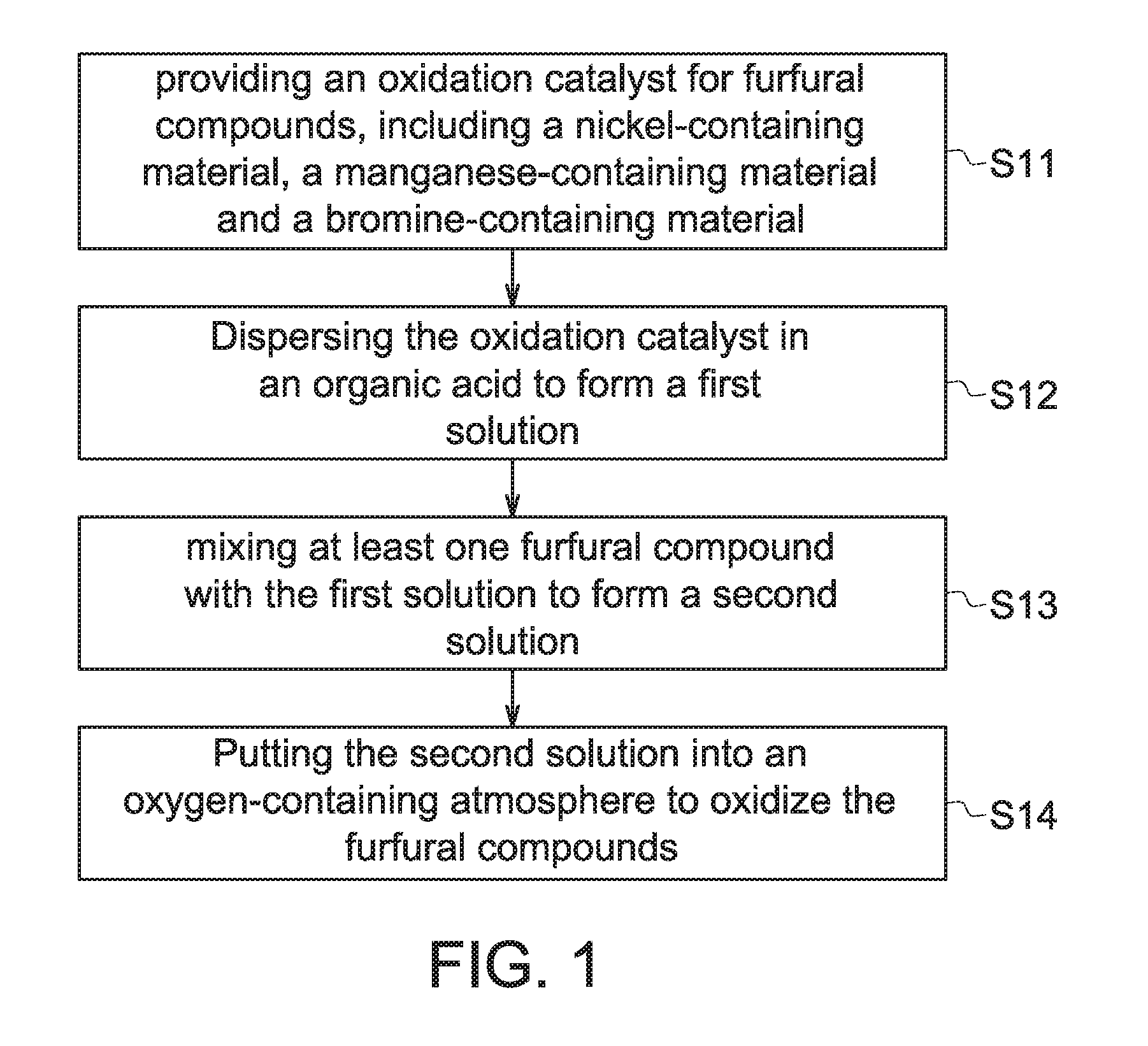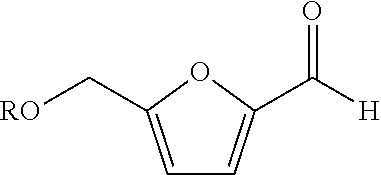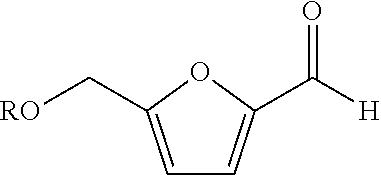Oxidation catalyst for furfural compounds and applying method thereof
- Summary
- Abstract
- Description
- Claims
- Application Information
AI Technical Summary
Benefits of technology
Problems solved by technology
Method used
Image
Examples
embodiment 1
[0021]In the present embodiment, the aforementioned catalyst including element Ni, element Mn and element Br were applied to perform the oxidation process of furfural compound; a comparative embodiment using an oxidation catalyst merely including element Mn and element Br was also provided to perform the oxidation process of furfural compound. The detailed operation thereof is described as follows.
[0022]Firstly, 12 grams (g) of nickel acetate, 5.9 g of manganese acetate and 2.02 g of hydrogen bromide were introduced into a 1.0 liter container of a Par reactor having acetic acid disposed therein to form the first solution serving as the oxidation catalyst for the subsequent oxidation reaction. In the present embodiment, the value of [Br] / ([Ni]+[Mn]) in the oxidation catalyst was substantially equal to 0.167 ([Br] / ([Ni]+[Mn]). 0.167). 52 g of HMF was dissolved in a 150 ml acetic acid solution having 2% water by weight and then added into the Par reactor with a feeding speed of 3.5 g p...
embodiments 2-1 , 2-2 and 2-3
Embodiments 2-1, 2-2 and 2-3
[0027]Firstly, 5.36 g of nickel acetate, 2.64 g of manganese acetate and 0.9 g of hydrogen bromide were introduced into a 1.0 liter container of a Par reactor having acetic acid disposed therein to form the first solution serving as the oxidation catalyst for the subsequent oxidation reaction. In the present embodiment, the value of [Br] / ([Ni]+[Mn]) in the oxidation catalyst was substantially equal to 0.167 ([Br] / ([Ni]+[Mn])=0.167). 11.55 g of HMF was dissolved in a 150 ml acetic acid solution having 2% water by weight and then added into the Par reactor to form the second solution. The second solution was then put under an oxygen-containing atmosphere, and oxidation of the furfural compounds involved therein occurred, wherein the reaction temperature was about 150° C. (the reaction temperature in the Embodiments 2-2 and 2-3 was about 180° C.), reaction pressure was maintained at about 20 kg / cm2. The temperature was remained in constant for 1 hour and the...
embodiment 4-1
[0034]Firstly, 12 g of nickel acetate, 5.9 g of manganese acetate and 2.02 g of hydrogen bromide were introduced into a 1.0 liter container of a Par reactor having acetic acid disposed therein to form the first solution serving as the oxidation catalyst for the subsequent oxidation reaction. In the present embodiment, the value of [Br] / ([Ni]+[Mn]) in the oxidation catalyst was substantially equal to 0.167 ([Br] / ([Ni]+[Mn]). 0.167). 11.55 g of HMF was dissolved in a 150 ml acetic acid solution having 1.8% water by weight and then added into the Par reactor form the second solution. The second solution was then put under an oxygen-containing atmosphere, and oxidation of the furfural compounds involved therein occurred, wherein the reaction temperature was about 80° C., 100° C., and 150° C. and the reaction time was 30 minutes, 30 minutes and 90 minutes respectively. The reaction pressure was maintained at about 20 kg / cm2. Thereinafter, products were precipitated when the second soluti...
PUM
| Property | Measurement | Unit |
|---|---|---|
| Fraction | aaaaa | aaaaa |
| Fraction | aaaaa | aaaaa |
| Weight | aaaaa | aaaaa |
Abstract
Description
Claims
Application Information
 Login to view more
Login to view more - R&D Engineer
- R&D Manager
- IP Professional
- Industry Leading Data Capabilities
- Powerful AI technology
- Patent DNA Extraction
Browse by: Latest US Patents, China's latest patents, Technical Efficacy Thesaurus, Application Domain, Technology Topic.
© 2024 PatSnap. All rights reserved.Legal|Privacy policy|Modern Slavery Act Transparency Statement|Sitemap



